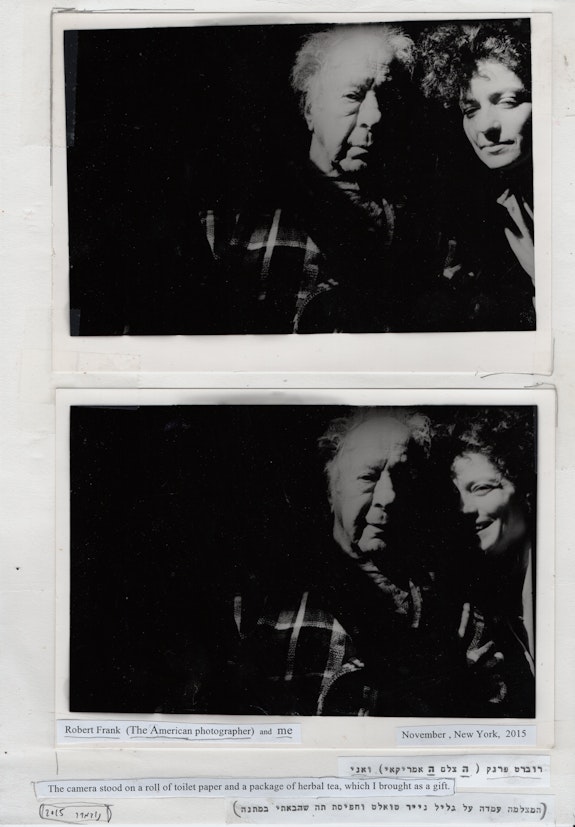
America, Robert Frank, and Dinah Shore’s Fist
by Gordon Moore
A Personal Remembrance
“See the USA, in your Chevrolet. America is asking you to call.” How I remember that. America in the fifties. There were no clouds, the new roads went on forever and it seemed that the tank was always full. Gas was cheap. I clearly remember a 15cent per gallon “Gas War” that went on for months between gas stations on the outskirts of Derby, Kansas, where we lived. We had won the war, after all, and no one seemed to worry about much of anything. Particularly not in white America. Which was mostly all we saw. At night, watching black and white TV (almost the only place where you saw those two colors mixed), you would hear Dinah Shore singing the praises of our wonderful USA while visiting it using a specific make of automobile. Life, after all, was “completer in the Chevy,” or so she said. She had a way of emphasizing the essential nature of the message in this generic commercial lyric by “punching” the air, at significant moments while singing it, with her fist. It was all very convincing to an America that was anxious to explore and exploit the rewards offered by our victory in WWII and the seemingly endless possibilities proffered by the military industrial complex. For most of America, between the eastern seaboard and “the Rockies way out west” (so she sang) what was worth seeing could be seen or accessed from an interstate. And so, my family, like many at the time, took Dinah Shore up on it. Right down to the Chevy.
I’m eight years old in 1955, which was the year we took the first of what became many road trips all over America. Starting from the geographic center of the country, we would touch a border or an ocean and return on a different interstate. Sitting in the backseat of first a ’54 Chevy and then a ’57 Buick, everything seemed beautiful going by at 60MPH. There was a kind of “false omniscienceness” to viewing the world this way. A palpable detachment from needing to focus on anything that seemed contradictory to what had become the White comfort zone of the American dream. The very thing Robert Hughes speaks perceptively about in “The Age of Anxiety” segment of “American Visions” while standing in Levittown.
But things for me, by the time I was eight, were beginning to change and I was starting to question certain assumptions regarding as “American altruistic.” Much to the annoyance of my parents. To this day, I trace part of the origins of that change to a particular experience, which occurred on that trip and I credit Robert Frank for, among many, many other things, confirming to me that “there was something there.” It went like this.
Having traveled north west out of Kansas for about four days in the summer of ’55, we had just come out of Bozeman, Montana, where we had visited a ranch, going west on I-90 headed to Missoula and it was getting kind of late. We always found a motel along the way. It seemed that along with the new interstate system, motels had sprung up all over the place as well. I, of course, always wanted one with a swimming pool. But a big storm had come up and we hadn’t found anything with a “vacancy” sign on and it was getting really bad and my dad was getting worried, so we pulled off at Butte. We drove down that very street you see in that photograph. Butte, Montana was (is) a mining town, and it looked it. I remember we passed a number of bars, dives really, one with horses tied up to a post rail in front. A guy was getting round-housed out of one of them and there were several women loitering around another that my mother seemed to know were prostitutes. I was curious. Butte was a tough ass place. Somehow one knew this was not what Dinah had in mind for you to be using your new Chevy to see on your tour of America. We kept going down the street and the only thing we could find was this big hotel in the middle of town. You couldn’t miss it. It was kind of old but the thing that was most unusual was that it was a HOTEL. We didn’t stay in HOTELS, we stayed in MOTELS. We were plains people. We like the horizon in the horizontal. The space. So anyway, we get out and go into what seemed like, and was, a huge lobby (I was eight) and my dad isn’t liking this much because it smells of cigars and such and this is not where he wants to stay with his family but the storm gives him no choice. There was some talk and it seemed like they only had a room with an extra roll-away bed, which I slept on. So a black porter (there were hardly any black people IN Montana, at the time) takes our bags to an elevator and I immediately did not like the look of that. We were, after all, “Christians” and I remember not liking the feeling of this black man having to carry our bags. That was demeaning. We could do that ourselves, and always had.
So we get to the floor and I remember walking down this narrow hall to the door of our room. The hall was dimly lit and the floor was RAW wood. The porter opened the door and for a moment, it was dark until he turned on the light which was a bare-naked lightbulb hanging from the ceiling. The four of us walked in, one by one, and my father is not liking anything about this, but it will have to do. NOBODY is paying ANY attention to the only thing in this room which I see. THE ONLY thing that registers to me and it’s this window WHICH IS OPEN (as if something has escaped) and the wind from the storm is blowing the curtains in (as if they are alive!) and I very clearly remember just walking straight to this window, putting my hands up until the curtains touched them and very clearly to this day remember saying out loud: “Look at this!, Look at this!” NOBODY in that room knew what the fuck I was talking about. But I did.
Somewhere like nine years later while I am working at the University Bookstore on the Ave. at the UW in Seattle, a book comes in to the art department titled “The Americans” and I start looking through it. I am stunned. Totally stunned. Who did this? Where did this come from? Did I dream this? As I turned the pages, I could actually remember my pulse accelerating at confronting the American social, political and cultural authenticity of those images. I quite realistically felt I had lived that book. And when I turned the page to the image of the window of the Finlen Hotel in Butte, Montana, I had such a rush, I had to sit down. In a very real sense…I had. From that moment forward, in my mind, Robert Frank had been elevated to something approaching a deity. Something he would not, in his humility, feel comfortable with. We had never seen images that honest before.
I told Robert Frank the whole story once (minus Dinah Shore). He questioned how it could have been the exact same room and I said I had no idea, of course, that it was but that everything else was exactly the same. Of that, I was very certain. It had become a pivotal experience in my life. He was touched. What were the odds, after all?
After I moved to New York City in 1972, I would see him occasionally passing my small loft on Prince St. around the corner from his loft on the Bowery and we would talk. He was remarkably soft spoken and very cordial to me. I always had the feeling I was in the presence of someone so elusive words could not really describe him. And that somehow that was just as it should have been. Of course, I never wanted to break the spell he had on me. Having now lived for very nearly half a century right off the Bowery, first on Prince and now on Spring St., I have come to greatly appreciate the grit which is implicit in all those images and everything he stood for. The very thing that the Bowery originally represented and has now almost entirely disappeared in what has become a totally commercial art world context.
I never tire at looking at “The Americans.” Those images are so perceptively honest and unaffected, they are impossible to transcend. And he knew that. He kept pushing the limits of what he had already achieved into new territory, both in terms of image and process and everything he did was as influential as what he had already done. There was never anything like him and trying to imagine there could ever be another Robert Frank is not unlike trying to imagine there could ever be another Shakespeare. He was inventive, visual, truth telling. And if I may be so presumptuous as to steal slightly from Mr. Kerouac: To Robert Frank, I now say this – Thank you for your humility, Thank you for your humanity and Thank you for the honest vulnerability in both.
YOU WILL BE FOREVER MISSED.
New York, NY
10/15/19
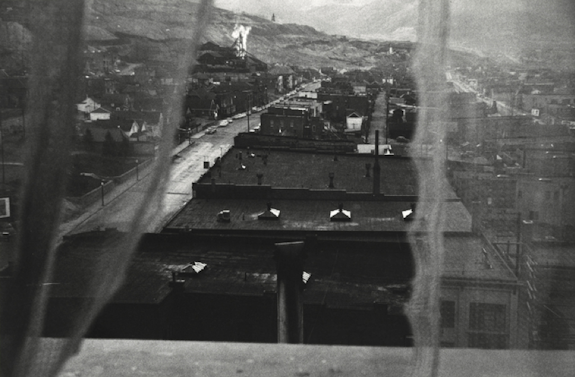
* * *
Storms and love
By Eva Tortora
Loved people
places and things
what an imagination
for capturing rain
and storms
and love
and inbetween
the glorious life
of wandering
miss you
and your gift your truth
read your photos
was very moved
Thank you for the life you bring
i find your voice
inspiring....
* * *

* * *
Jehsong Baak
Like for so many photographers, Mr. Frank was a very important influence for me. I got to meet him for the first time in 2003 thanks to Sid Kaplan, his printer, for an article I did for the French newspaper, Liberation, for his show London/Wales at the Corcoran. Then in 2006 after Robert Delpire published my first book and I had the pleasure of visiting his Bleecker Street apartment.
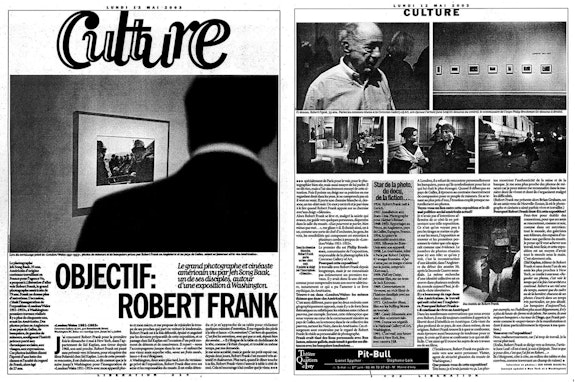


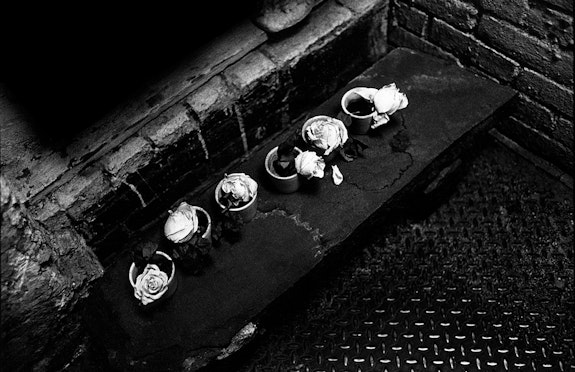
* * *
Robert Frank Tribute
by Larry Racioppo
I bought a copy of THE AMERICANS—the 1968 Aperture/Museum of Modern Art Edition—for $5.95 in 1971.
I liked Jack Kerouac’s introduction as much as the photographs. Little did I know that the powerful images in this little book would still be influencing me almost 50 years later.
When I returned to Brooklyn in December, 1970, after two years in California as a VISTA Volunteer, I had no plans and a $30 camera I barely knew how to use. I was 22 years old and I wanted to become a photographer. I took a course at the School of Visual Arts and a job with the telephone company. I began to photograph my family and friends in South Brooklyn. I rented a small storefront in Sunset Park and set up a black and white darkroom.
I wanted to make simple, direct photographs of real people so, of course, I was drawn to Frank’s natural, clear-eyed images. I remember loving his photos of bars, especially their jukeboxes.
I might have had these images in the back of my mind in 1971 when I made this photo in a Bronx candy store:

I have that same copy of THE AMERICANS and looked through it last night.
The photographs still pulse with power and energy, and sure enough the tenth image—Candy Store—New York City depicts a group of teenagers gathered around a jukebox!

There are three more photos with glowing jukeboxes—in South Carolina, Nevada and back in New York City.
I dream of making a body of work like this.
Rockaway, NY
10-31-19
* * *
Robert Frank
By Cary Abrams
Kerouac proclaimed that,
“(You) sucked a sad poem right out of America onto film,
taking rank among the tragic poets of the world.”
Robert, your travels over the vast American continent have ended.
Through your foreigner’s eyes
you beheld a new land,
which had passed before us unseen.
You set out as Ahab
onto the limitless sea of consciousness,
seeking the Leviathan,
to create a vision.
You captured the spirit of a people,
set it down,
in silver-halide crystals,
etched your black and white images
onto our skulls.
You made us take notice,
revealed a secret world.
A blanket covered corpse lying beside Arizona Route 66.
Death, life, sorrow, joy,
set before us,
stark, uncompromisingly,
in equal measure.
The vast epiphany captured in random fashion.
You opened our hearts, our eyes
to the grandeur, the heartache
revealed the underside of life.
You altered our vision,
transformed our reality,
expanded our view.
Your vagabond wanderings,
set down magically,
27,000 images culled to the 83
which became The Americans.
Your vision set against
the hope of '50s America,
your lens opening to capture a broader view.
Our daily life made transcendent.
All of it set out for us to view.
The median line of New Mexico US 285 leading us into eternity,
The anonymous faces on a New Orleans trolley,
becoming iconic,
broadening our humanity…
Looking out from a hotel window over a darkened Butte, Montana skyline.
The silent, the dispossessed given voice.
Quotidian moments frozen in time.
Elevated in the elegance of your eye.
In their rawness, a nobility.
You offered up a vision of America to itself.
Indefatigable,
you held out,
against time,
unwilling to compromise.
From your outpost at the end of the once derelict Bleecker Street,
you created a fortress against time.
The world around you altered,
you remained true to your vision,
a seeming vestige of another age.
Never complacent,
in your Joblike testing,
you labored on,
Kerouac got it right:
“To Robert Frank I now give this message: You got eyes.”
* * *
Rob Renpenning
This diptych is from a series of Polaroid photos I shot from around 2004. I had these two Polaroids digitally enlarged so each image is about 18 inch square. I've never shown them. I'm a painter and don't consider myself a photographer. Robert Frank once gave a marathon 3 day lecture at my art college. He showed his home movies. He said he wasn't very good at using his video camera but that freed him up as an artist. Maybe I took this to heart. His lecture was pivotal for me in a way that transcended art. I hope his spirit will always live on.
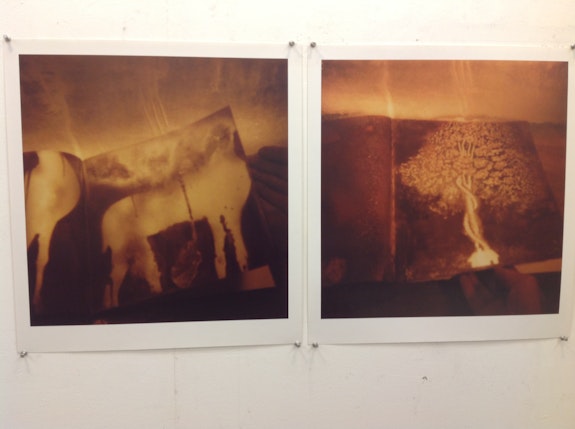
* * *
Leo Nash
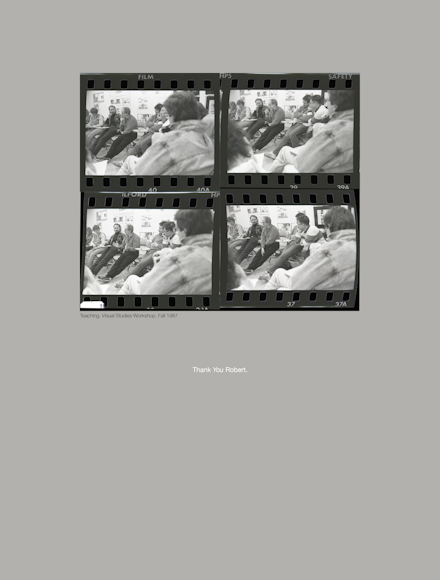
Note: The “Thank You Robert” references a book Frank did with Scalo [printed by Steidl] in 1996, entitled: Thank You
It was full of postcards people had sent him over the years. A testament to his sensibilities that he saved them and took the time…
From the back of the book:
I have saved these cards over many years
I was touched how many people wanted to tell me
their appreciation of what I was doing
without asking anything in return
This small book is my way of saying Thank You
–Robert Frank
* * *
JoAnn Verburg
Although Robert Frank influenced my photography from the time I saw The Americans about five decades ago when I was about 19 years old, these two 5×7 large format pictures include his name in their titles. They make specific reference to 2 of the many extraordinary pictures from The Americans I memorized way back when, that I have in my memory bank.
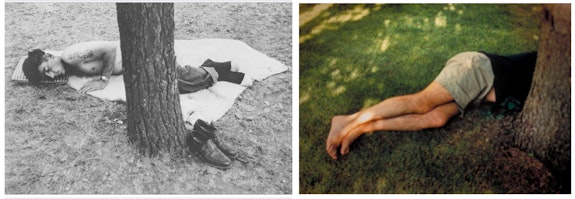
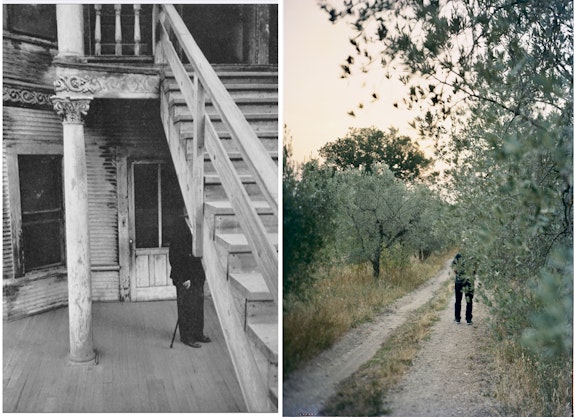
* * *
Gregory Hedderman
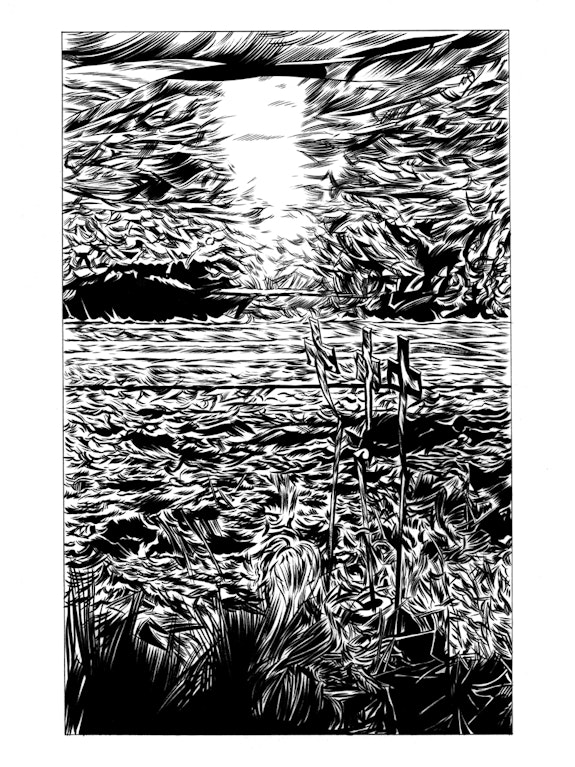
* * *
Jason Eskenazi
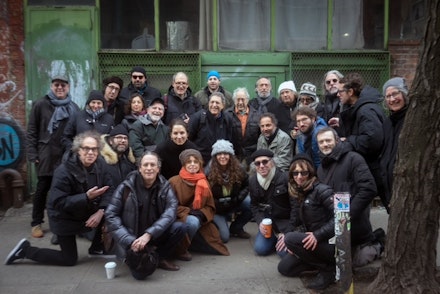
June had gone out for ice cream. It was the first time I was alone with Robert; Two silent men sitting in the kitchen. He picked up the The Americans List and asked, as he had asked me many times before, “You made this for me?” I asked if I should read it to him. He gave me the book, and as I read aloud he imagined which photo I was describing from The Americans. It was like reading a fairy tale to the tale maker. When his own images popped into his head from the descriptions, he smiled. Then June returned and we ate ice cream until the day melted away.
* * *
Noa Sadka
My name is Noa Sadka, I am a photographer-artist living and working in Tel-Aviv.
Many years ago, 20 years exactly, I was in my studio in Amsterdam (Rikjsakademy)—I lived there then. I felt sad, and I start to write a letter to Robert Frank.
I didn't know his address, of course.I didn't know that there were people all over different places writing letters to him.
I didn't know there is a book "thank you" that gathers some of these letters
I didn't know anything practical of that sort
I just felt an impulse to write him, as a photographer and a soul-photographer and being,
I felt there is a place there for me somehow, that can see me, maybe
so I wrote, feeling lonely in a dutch country seeking for comfort just even by addressing him
I hang the letter in my studio—the title of it was—letter was: “A letter to Robert Frank, I don't think I will send it”
Then few days or few weeks after, Joan Jonas, the artist, whom was one of the adviser in the Akademie, and a good friend of June and Robert (that I didn't know, of course) looked at the letter, read it and told me: “send, here his address,” and gave me a piece of paper with Robert Frank’s address on it.
So I send it, with out thinking that he will ever comeback to me
2 months later a letter from “RF” arrived , and a real correspondence started
A few years ago, I was in New York for a month, and we met few times, with June too
I cherish these meetings
